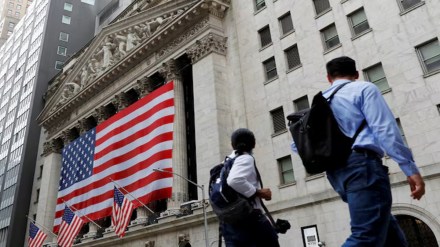By Trivesh D
The U.S. economy is in a phase of uncertainty, with slowing growth and changing labor conditions. Some view this as a natural correction from the tight labor market in 2022, while others worry it could foreshadow a recession.
Recent data shows that consumer spending is still strong, with retail sales up 1.0% month-over-month. Inflation is cooling, raising hopes for a ‘soft landing.’ However, the end of temporary government jobs and declining consumer confidence may disrupt this balance.
Globally, as central banks cut rates, the U.S. outlook depends on whether the current deceleration becomes a more prolonged downturn or evolves into a recession.
Federal Reserve
The Federal Reserve has been pivotal in the ongoing recession debate, especially with its recent monetary policy decisions. After significant rate hikes in 2022-2023, the Fed started cutting rates in 2024, aiming to curb inflation while preserving economic stability. Disinflation trends support optimism, suggesting that inflation is under control for now.
Fed Chair Jerome Powell has emphasized the importance of balancing inflation control with a strong labor market. The Fed’s labor-centric approach signals its readiness to adjust rate cuts based on economic conditions. However, concerns remain about whether this will be enough to prevent a downturn, particularly as the labor market shows signs of cooling.
Labor Market and Employment Data
The labor market is a crucial indicator of economic health. While unemployment is not yet a major issue, there are risks. Many jobs added during the pandemic were temporary, tied to government stimulus programs, and with these roles expiring, unemployment could rise.
Additionally, the labor market is rebalancing after the tight conditions of 2022. Jobless claims are expected to increase as government hiring slows. If job losses rise, this could push the economy closer to a recession.
There is also debate about the relevance of traditional unemployment figures. Despite a slight uptick in joblessness, consumer spending has held steady, bolstered by the remnants of pandemic-era stimulus. This spending has kept the economy stable, but its long-term sustainability is uncertain.
Consumer Confidence and Economic Sentiment
Another important factor is consumer confidence, which has recently declined. The dip in the Consumer Confidence Index suggests growing caution about the future. Since consumer spending is a major driver of the U.S. economy, any significant reduction could negatively impact growth.
While consumer demand remained strong in early 2024, rising inflation, higher interest rates, and weakening confidence could take their toll. A soft landing largely depends on consumer spending remaining resilient. If spending falters, the broader economy may follow.
Impact of U.S. Elections
The upcoming U.S. presidential election adds another layer of unpredictability. Elections often bring market volatility, and potential policy shifts could further stir things up. With no clear frontrunner and uncertainty about candidates’ economic policies, the markets are already feeling the pressure.
Investors are closely monitoring the political scene, especially as job data weakens ahead of the election. Political instability could heighten the risks of a recession, making the next few months particularly challenging.
Global Economic Context
The U.S. economy doesn’t operate in a vacuum, and global factors are also in play. Central banks in Europe and Canada have started cutting rates to counter slowing growth. These actions, alongside easing inflation, create opportunities for investors, but the U.S. remains cautious, with the Fed likely to implement smaller cuts, depending on labor market data.
Market volatility, especially in bonds, adds to the uncertainty. High bond volatility (MOVE index) and rebalancing between stocks and bonds create a challenging environment for investors trying to predict market trends. Although sectors like technology and healthcare have shown resilience, concerns persist about whether this strength can endure if the broader economy weakens.
Where is the U.S. Heading?
Although the U.S. hasn’t entered a recession yet, the risks are real. Inflationary pressures, a cooling labor market, and declining consumer confidence all pose threats. However, there is still hope for a soft landing if inflation continues to ease and consumer spending remains strong.
The Fed’s flexible approach to rate cuts and its focus on the labor market suggest policymakers are ready to act to mitigate potential risks. Investors are paying close attention to economic data and political developments, trying to assess the likelihood of a recession. While the risks are present, the U.S. economy could still avoid a full-blown recession if the right factors align in the months ahead.
(Author is COO, Tradejini)
Disclaimer: Views, recommendations, and opinions expressed are personal and do not reflect the official position or policy of FinancialExpress.com. Readers are advised to consult qualified financial advisors before making any investment decision. Reproducing this content without permission is prohibited.
